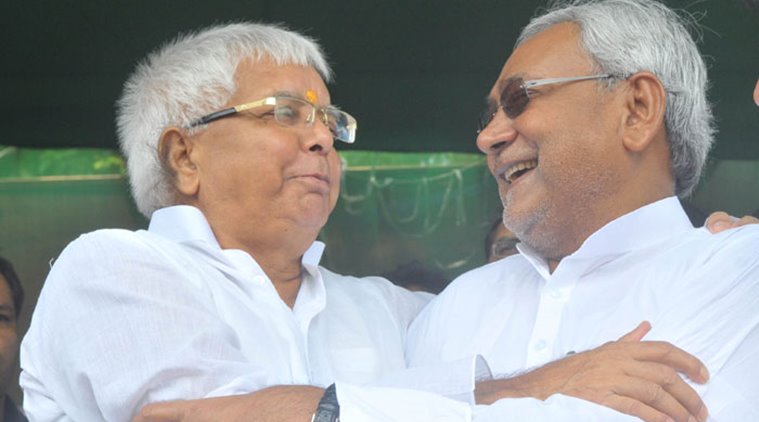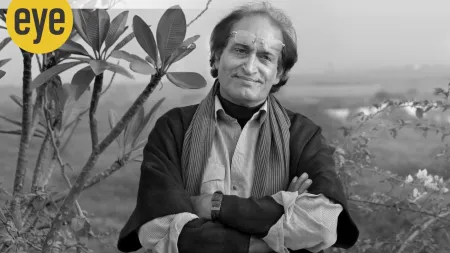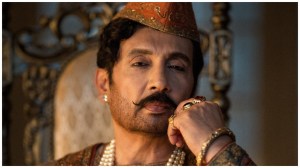- India
- International
From bastion, advice for Lalu son, learn from Nitish Kumar
The Yadavs of Raghopur acknowledge Lalu for giving them a voice and political power but in 2016, that gratitude is not an unmixed thing.
 RJD chief Lalu Prasad and Chief Minister Nitish Kumar.
RJD chief Lalu Prasad and Chief Minister Nitish Kumar.
Ahead of the Assembly election of November 2015, when Nitish Kumar hitched his JD(U) to Lalu Prasad’s RJD, with the Congress the third wheel, the Mahagathbandhan or grand alliance was seen as a desperate survival bid against an apparently unstoppable BJP. That’s why from Day 1, despite its remarkable success — and maybe because of it, too — political obit writers have found it irresistible.
To check the health of the alliance as its government completes six months this week, come to Raghopur, a Yadav bastion in district Vaishali, which has earlier elected Rabri Devi and Lalu, and is famous now for being the constituency of Lalu’s son, heir apparent and Bihar’s deputy chief minister, Tejashwi.
The Yadavs of Raghopur acknowledge Lalu for giving them a voice and political power but in 2016, that gratitude is not an unmixed thing.
They voted for his son last year but the self-awareness of a community that allowed power to go to its head runs through it along with a keen sense of the missed opportunities of an empowerment without a vision of governance.
[related-post]
There is admiration for Nitish’s development achievements and his recent move to impose prohibition has had a disarming effect. But for Tejashwi, a crucial bridge test lies ahead.

For, to go to Raghopur, you must cross the wobbly Peepa Pul — a temporary contrivance of iron sheets that sways perilously, to be dismantled, as happens every year, once the rains come and water rises in the Ganga and then only the boats will ply.
Before the Assembly elections last year, Nitish inaugurated by remote control from Patna a new bridge from Kacchi Dargah to Bidupur and Tejashwi has committed to building it since. But until that happens, Raghopur block remains an island hemmed in by the Ganga on three sides and the Gandak on the fourth, with the Peepa Pul its wavering connection to a wider world.
In a tea shop in Malikpur village just across Peepa Pul, a group of men, all Yadavs, talk about prohibition. There is a consensus here, echoed across the constituency, that it’s a good thing. Of course, the revellers didn’t jump and dance as fervently this marriage season in the processions that trailed the “DJ trolleys” (caged wedding bands pulled by a tractor engine), but the men also don’t get into fights anymore. Prohibition, everyone agrees, has made the women very happy.
A few sulking men weakly hold out against the spreading political correctness — it could have been a phased affair, they grumble, rather than the sudden ban. But in a state where the government is still looked up to as the “guardian”, an anti-prohibition argument on the grounds of encroachment of an individual’s freedom is conspicuous by its absence.
If prohibition has been welcomed with near unanimity, a political discussion can only begin in this Lalu bastion once an important preliminary is out of the way.
Jawaharlal Rai, a recently retired schoolteacher, does the needful: “There was nothing here before Lalu ji. Everything you see here is his gift — electricity, road, Peepa Pul”. Raghopur’s resident deity has been paid the mandatory obeisance, and now the conversation can flow.
The Yadavs have been especially helped by Nitish raj, proposes Manager Rai, a farmer: “We are not as uttejit (excitable) in Nitish 3 as we were in Nitish 1 and Nitish 2.” Prohibition has subdued passions, but what has really changed is this: “Earlier, the Yadav would swagger into the block office. Now the administration doesn’t pay him attention because Nitish ji has laid down that everyone must stay within their limits”.
That, according to Manager Rai, is a good thing, because “even as the Yadavs were the aggressors, they were also attacked the most in Yadav raj.”
“If Rabri Devi can be CM, why not Tejashwi?” Avadesh Rai throws the question, at speculation that “class 9 pass” Tejashwi could become chief minister in the event of a successful Nitish bid for prime ministership. But 19 years after Lalu made his wife the placeholder CM, it carries an unmistakable sting in its tail.
“Raghopur owes Lalu”, says Dharam Rai in nearby Rampur-Syamchand village, “but if I am elected mukhiya and I don’t work, can I expect to be voted back again?”
Uma Shankar Rai, who has a puncture repair shop draws a distinction: “Tejashwi is a blank slate, unlike his mother, he doesn’t carry his father’s baggage. Soch alag hai, (there is new thinking) from the time Rabri Devi became CM. It is on him now to spoil his future or burnish it”. And if Tejashwi does well, he says, “more than Lalu, the credit will go to Nitish”.
Uma Shankar looks back: “People misused Lalu’s name, less educated Yaduvanshis like us brought him down. Of course, the guardian (leader) must also take the blame. If he had been careful earlier, as he is now, he would not have had to go to jail”. But the Lalu story has changed today, he points out. “Where is Sadhu Yadav now? Do you see him, or others like him?” Lalu, he says, is different in “shareer” and “vichaar”, body and spirit, and “if he wasn’t, he would not have won power again”.
In the Harijan tola (cluster) of Rampur-Syamchand, they talk of prohibition as the “badka vikas” (a big development step), even as they point to a string of absences — no toilets, a chapakal (handpump) that the government provides no funds to repair because villages must wait for Nitish to deliver on his election-time commitment of drinking water taps in every home, schools that serve khichdi in place of education. Till the Kacchi Dargah-Bidupur bridge is built, they say, the factories won’t come, or the jobs, and the sick will not make it to hospital in an emergency.
“Tejashwi must work like Nitish”, says young Manoj Kumar, who voted for Modi as PM. Lagan Deo Das specifies: “He (Tejashwi) has to make the bridge, a permanent bridge”.
In the all-Rajput tola of Fatehpur village, where the air seems less rife with expectation or hope of change, and thicker with disbelief of the Lalu-Nitish dispensation, there is a reluctant appreciation of prohibition. “Daaru band hua hai, crime nahi”, says Ajay Kumar Singh, a businessman. For Munna Kumar, farmer and businessman, “This government has implemented prohibition after having helped turn people into addicts by its earlier policy. For the rest, it is the same kidnapping, the same murder”.
A discussion on crime quickly divides the Yadavs from the Rajputs. Arun Singh, a Rajput farmer, echoes the familiar upper-caste criticism of the Mahagathbandhan government: “Nitish governed well but the trouble began once he got back with Lalu”. But both the Yadavs and Rajputs of Raghopur agree that the region’s most pressing need and necessity is the bridge that Tejashwi must build.
Tejashwi needs to grow and mature, says Kameshwar Yadav. “The guardian of the house should be resilient like its chaukhat (threshold), have the sahanshakti (tolerance) to take the kicks and jolts of the people as they step in”. But “if he doesn’t build the bridge, Lalu’s son will also go, just as Lalu was voted out earlier”, he says. How long, after all, must women in labour be ferried by boat to the doctor in Patna?
But if the Yadavs are putting Tejashwi to the bridge test, the Rajputs of Raghopur are extending the gauntlet to a leader they call their own. Narendra Modi and the Centre must help Tejashwi, says Sunil Kumar Singh, and so what if the BJP did not win in Bihar. “You should be willing to build the bridge even if you didn’t get the vote”.
(Tomorrow: Father, son and only a few old ghosts)
WATCH INDIAN EXPRESS VIDEOS HERE
May 05: Latest News
- 01
- 02
- 03
- 04
- 05





































